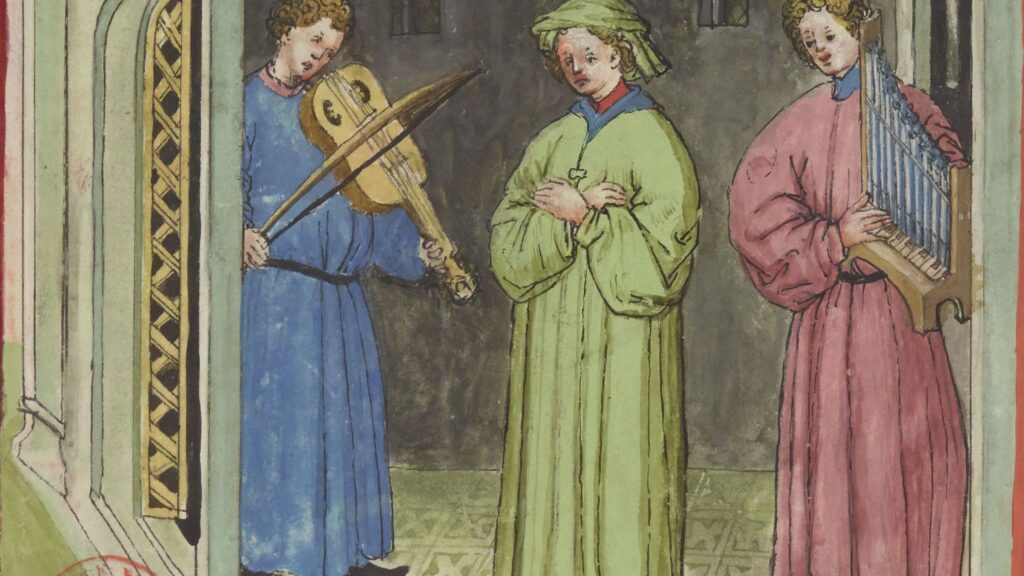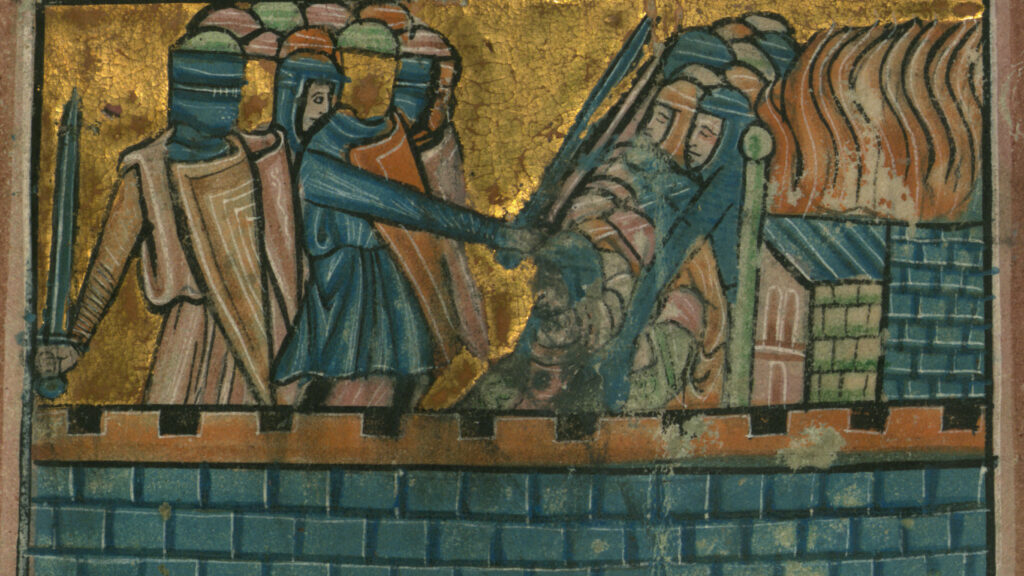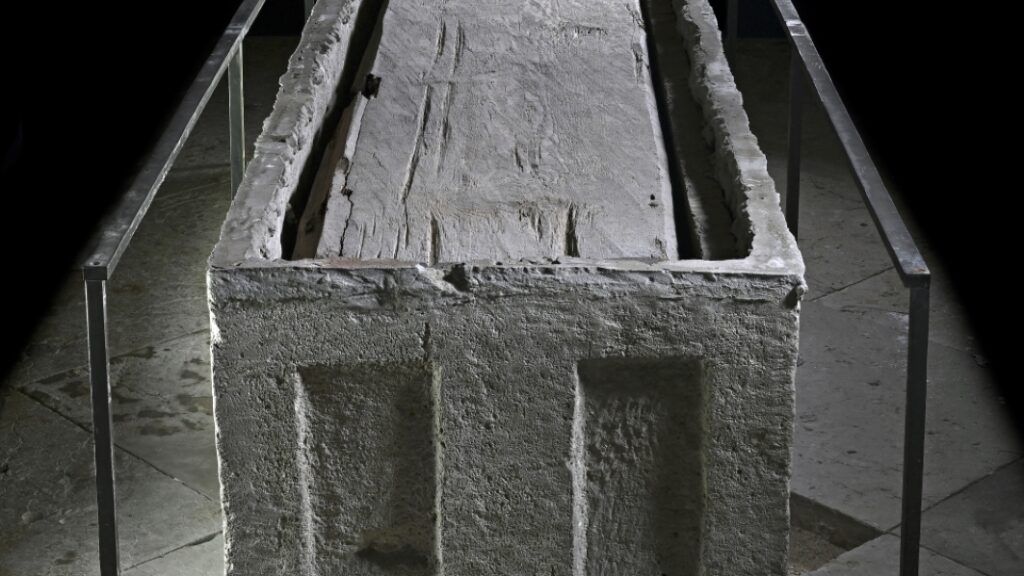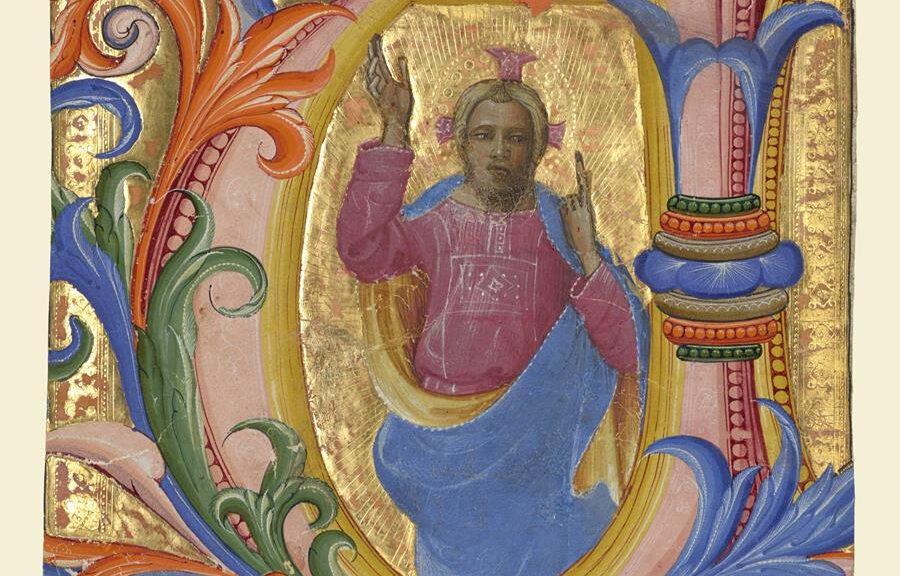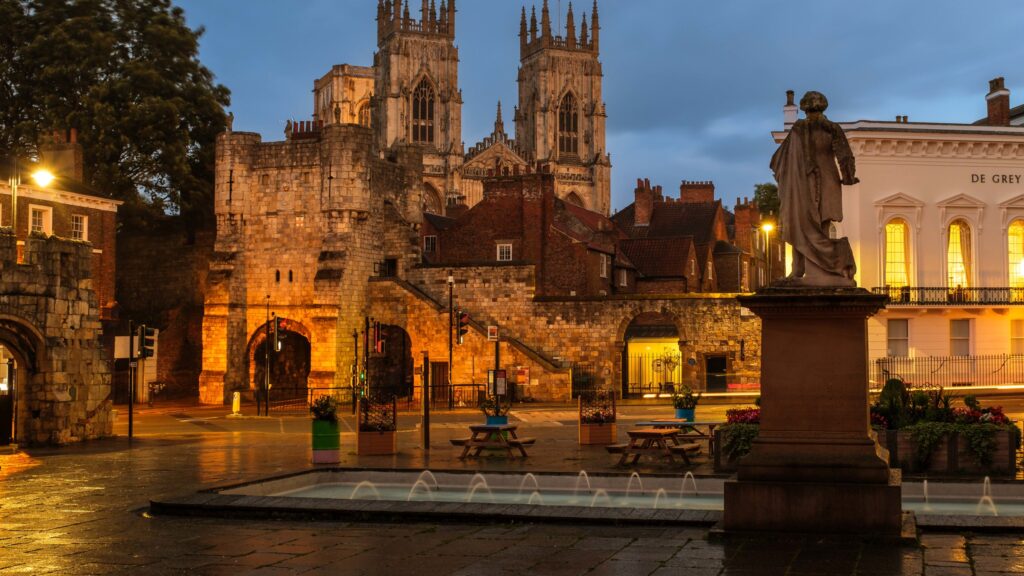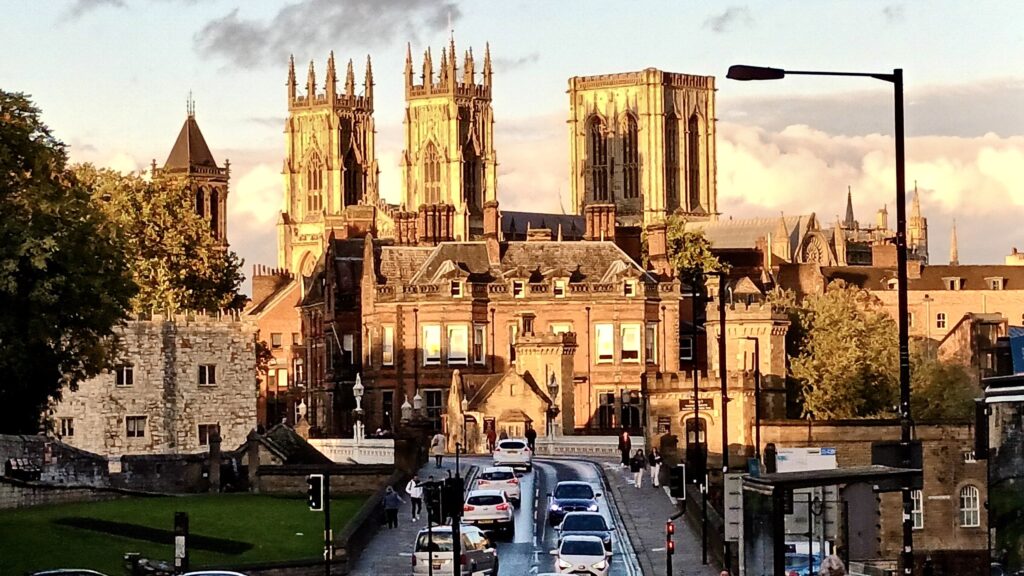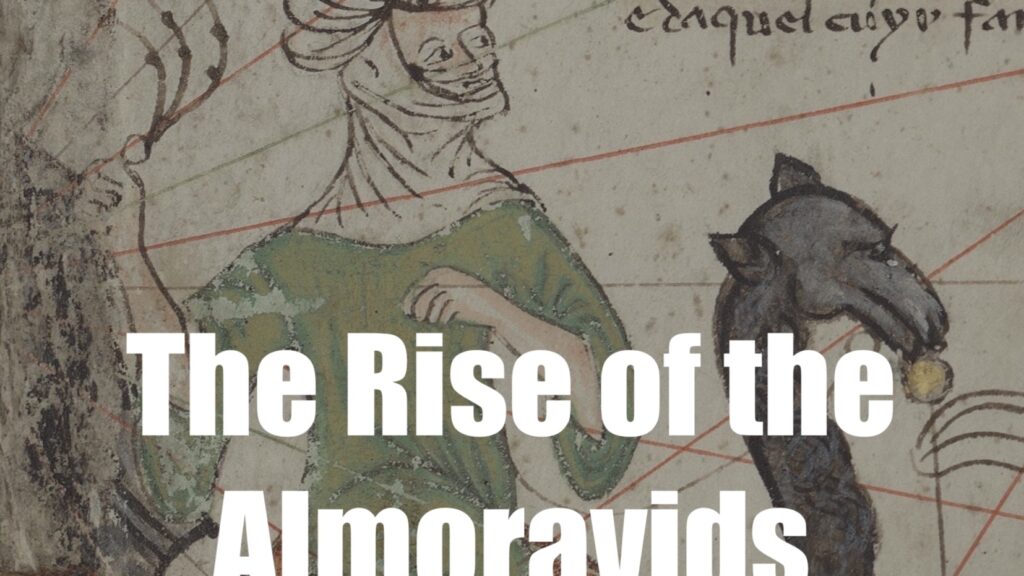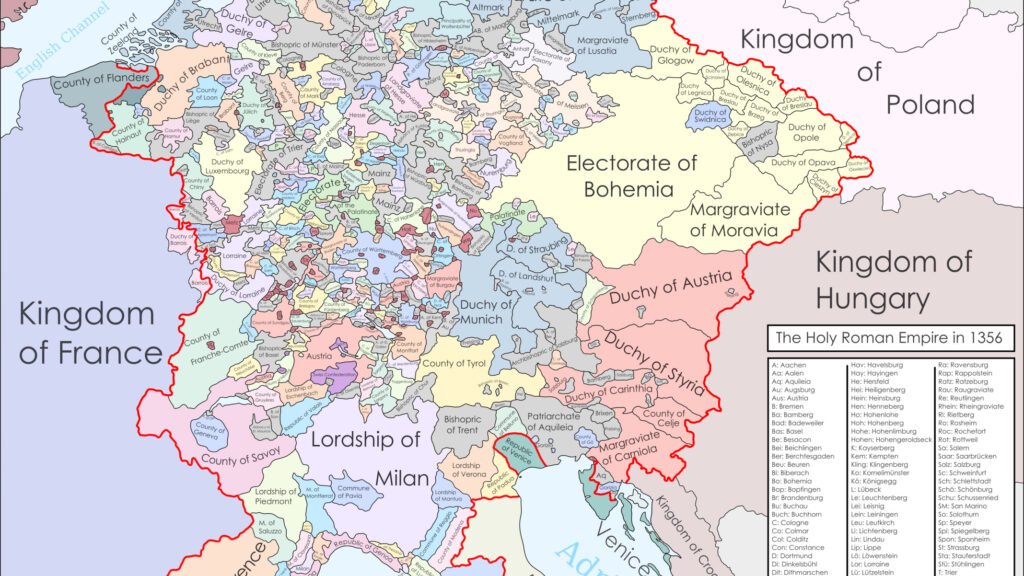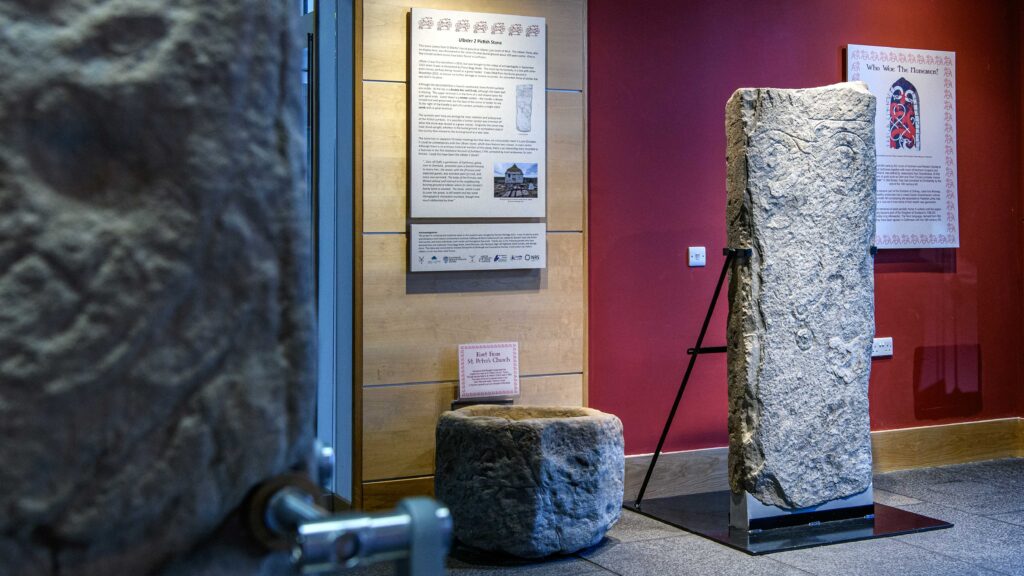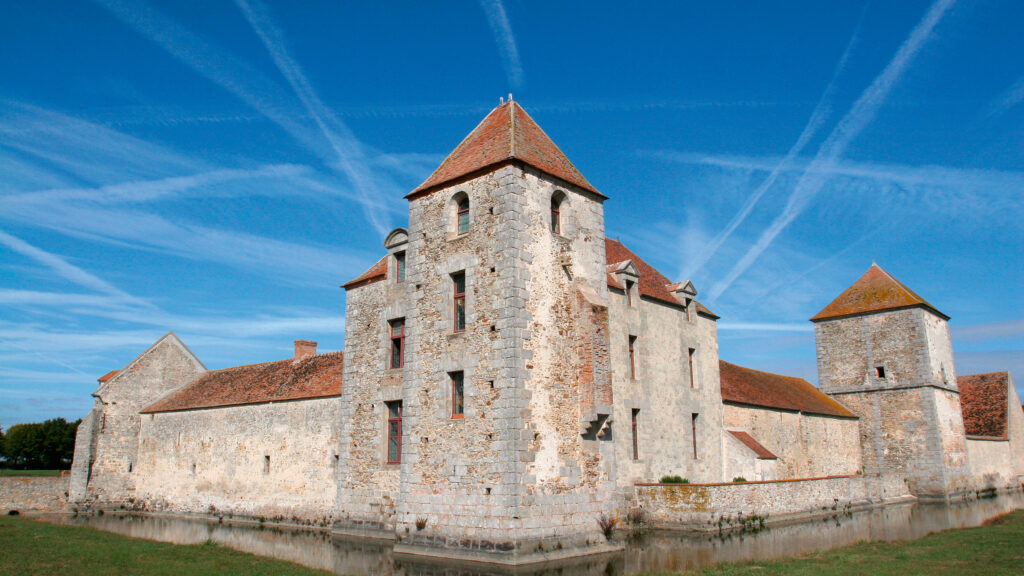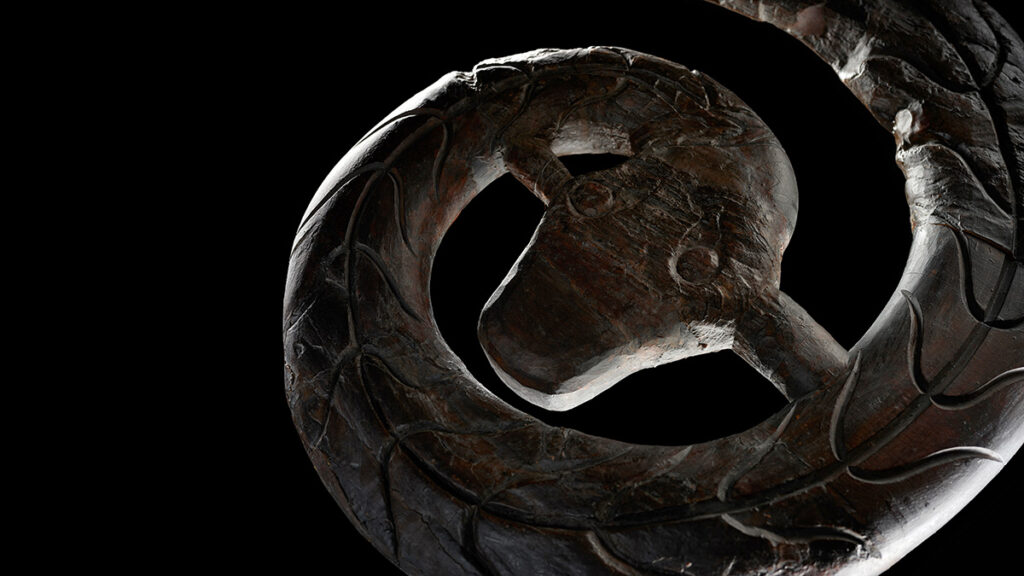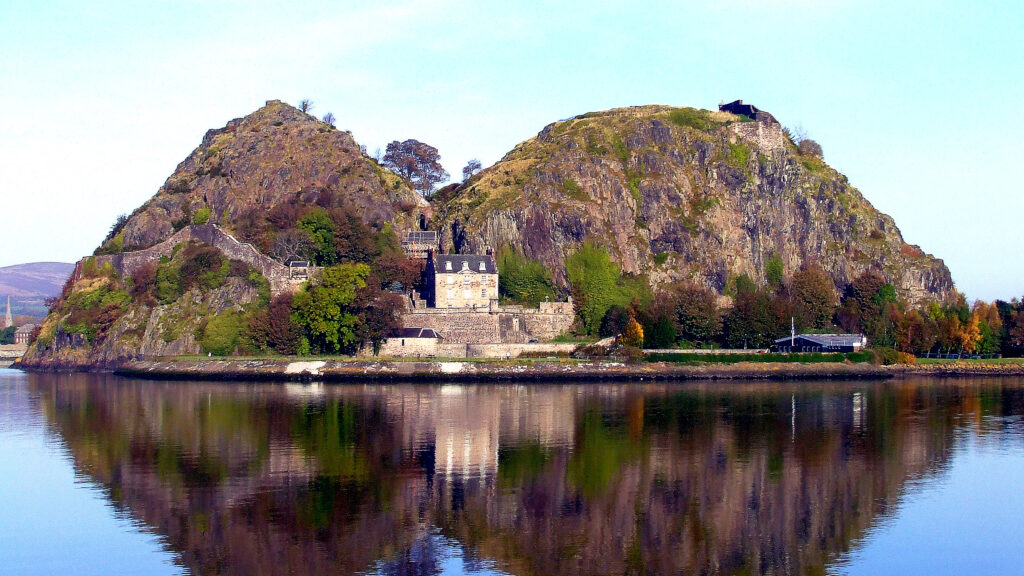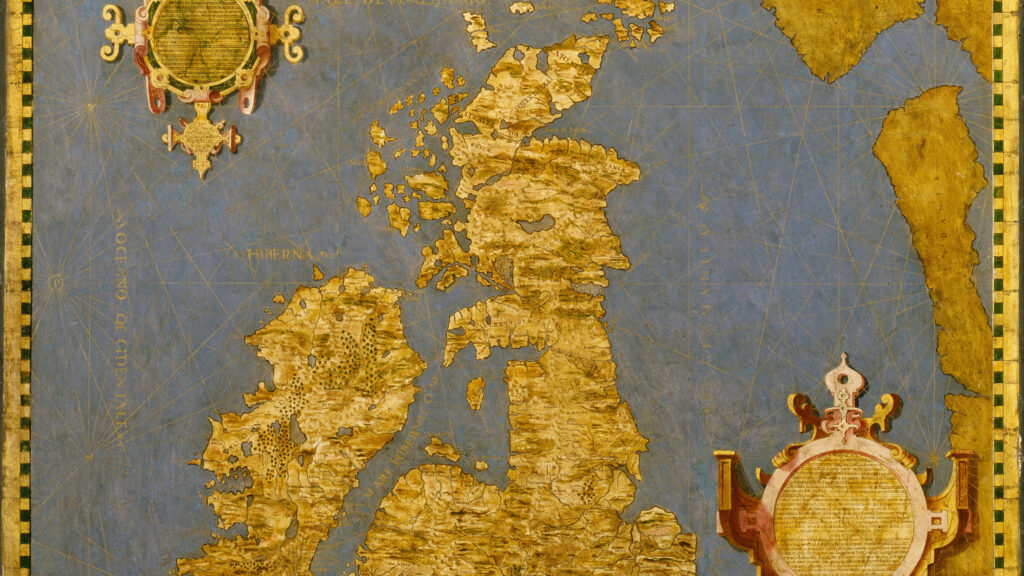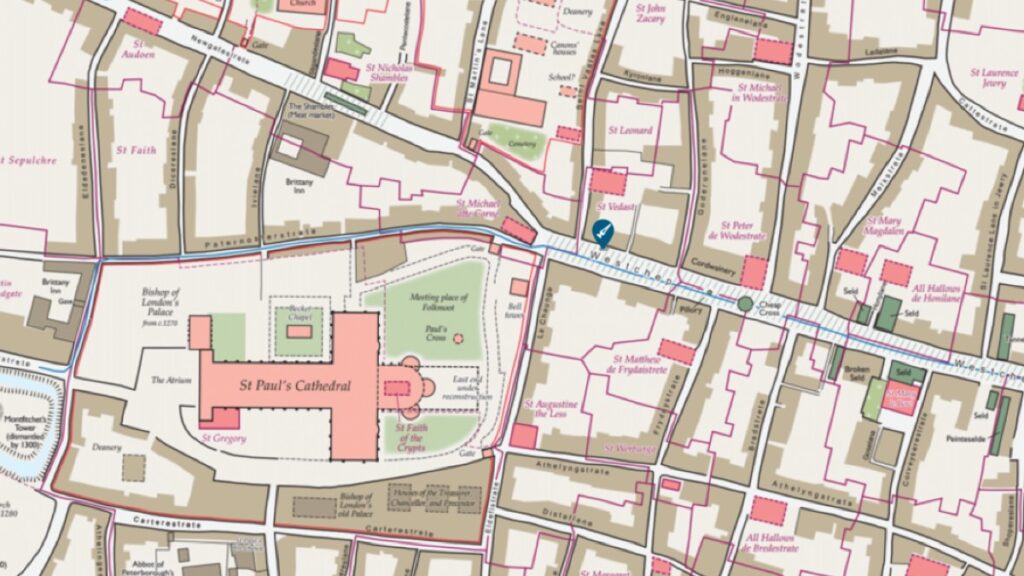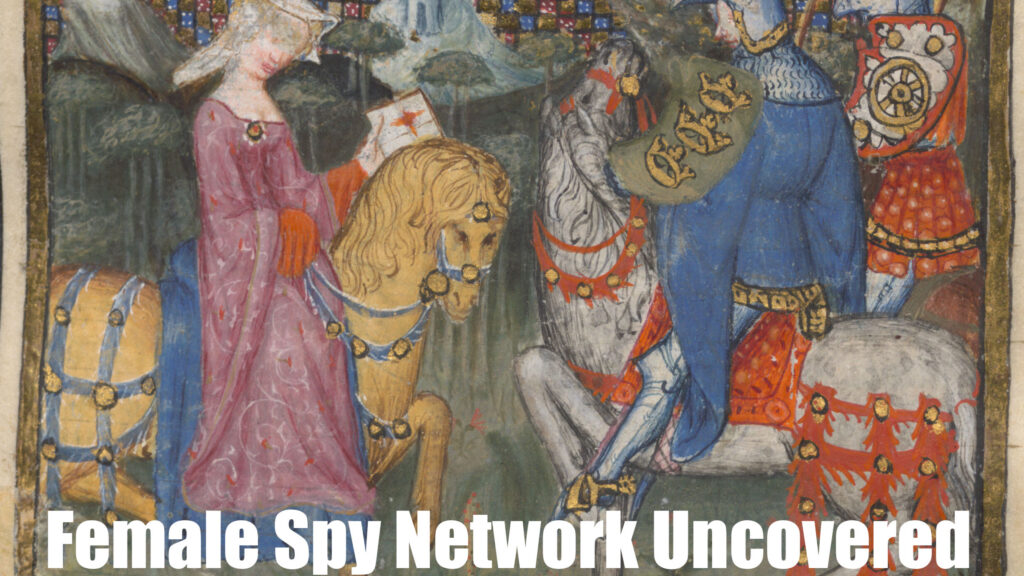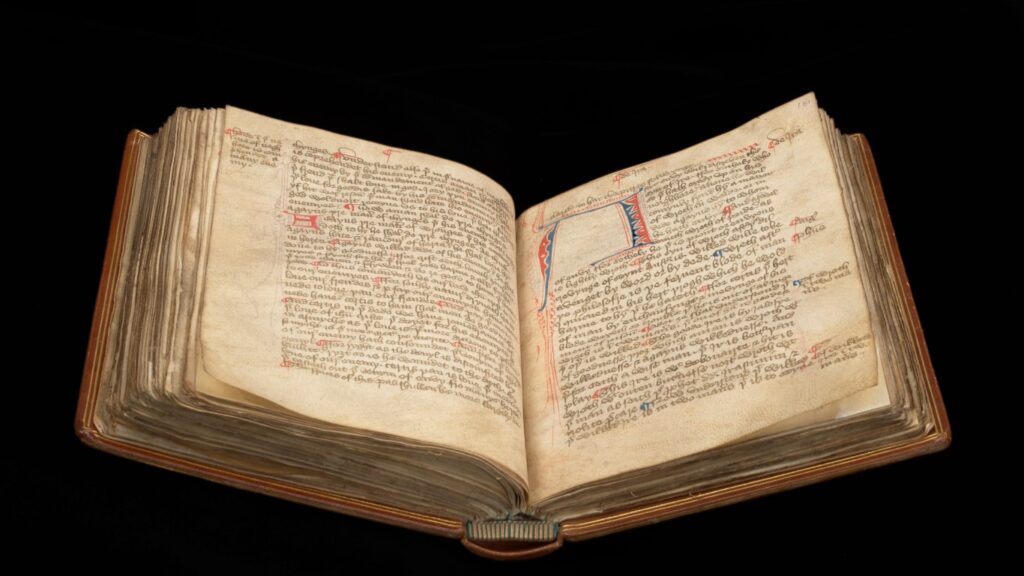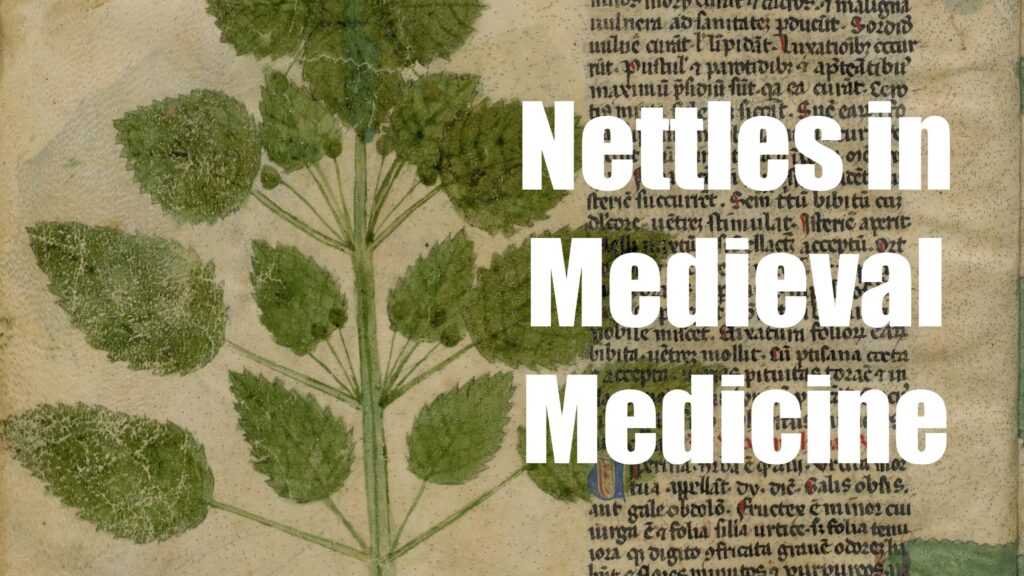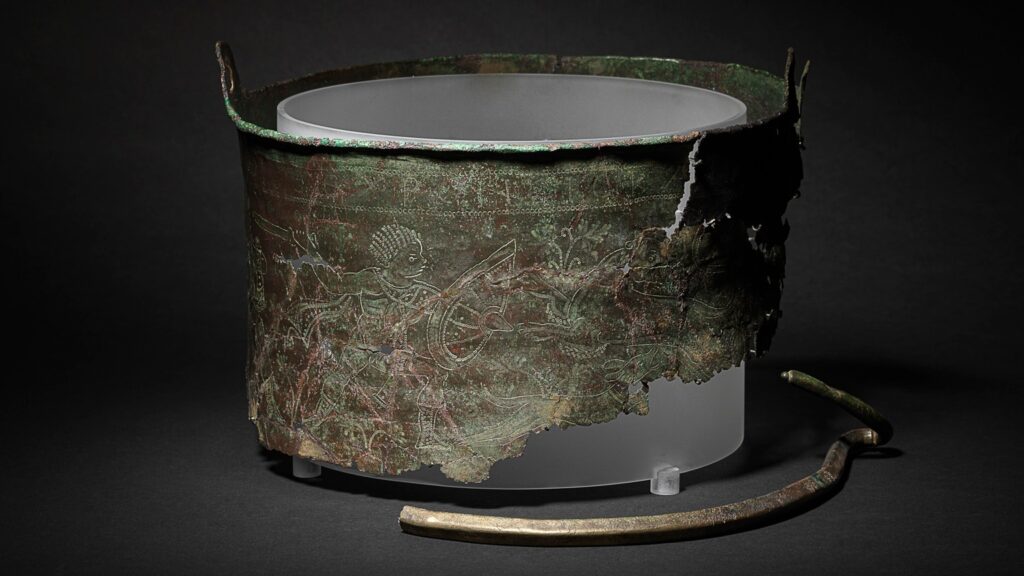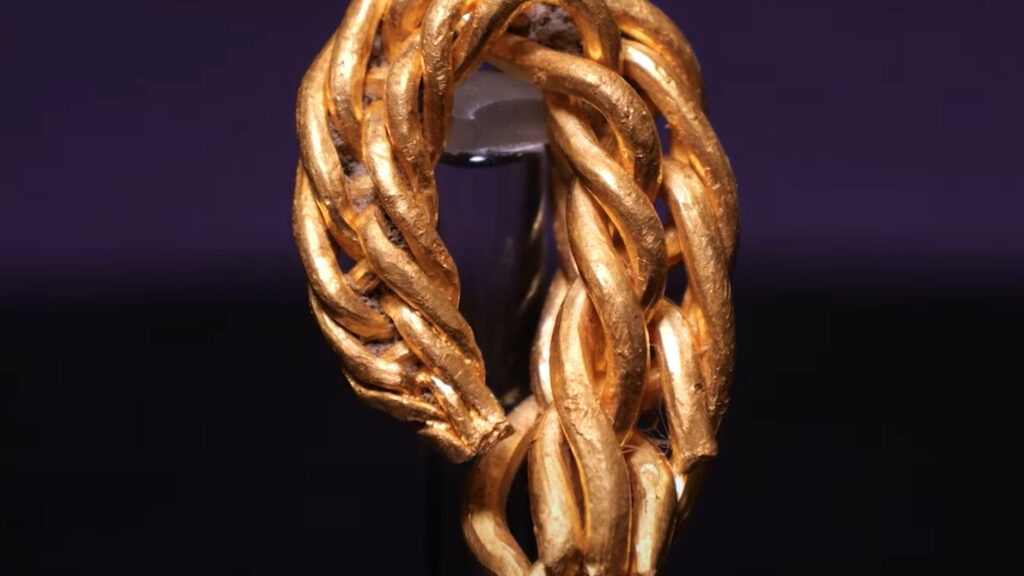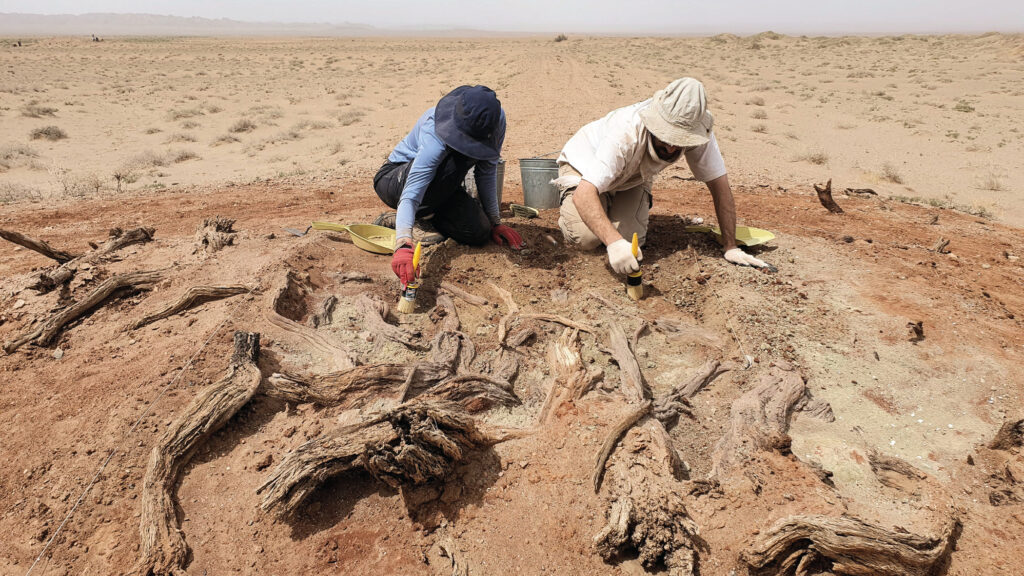International Conference on Medieval and Renaissance Music Comes to Northern England
MedRen2025, an international conference on medieval and Renaissance music, is taking place this week across three universities in northern England—Northumbria, Newcastle, and Durham—bringing together over 250 scholars and performers from around the world.
Strategic Rivals: How England and France Waged War in the High Middle Ages
How medieval kings like William the Conqueror, Henry II, and Philip II used strategy, diplomacy, and finance to wage war and build power across England and France.
Medieval Islamic Maps on Display at Dublin’s Chester Beatty
A thirteenth-century Arabic manuscript featuring one of the earliest known collections of Islamic world maps is the focus of Routes and Realms –…
Otto the Great’s Tomb Opened for Investigation and Conservation Work
The tomb of Otto the Great has been opened in Magdeburg Cathedral. Conservators discovered human remains, medieval textiles, and grave goods as part of a major conservation project to save the emperor’s burial site.
Getty Museum Acquires Major Gift of Italian Renaissance Manuscripts
The Getty Museum has acquired 38 illuminated manuscript leaves from the Burke Collection, showcasing masterpieces of Italian art from the 12th to 17th centuries, including works by Lorenzo Monaco and Giovanni di Paolo.
Renaissance Fresco Restored in Italy
A rarely seen Renaissance fresco by Beato Angelico has been restored at the Convent of San Domenico in Fiesole, near Florence. The Crucifixion scene reveals new insights into the artist’s early work.
Medieval Gateway in York Undergoes Major Conservation Effort
Bootham Bar, one of York’s medieval gateways, is undergoing significant conservation work as part of the city’s ongoing efforts to preserve its historic walls.
Medieval Hospital Unearthed Beneath Sinkhole in York
A recent sinkhole in the centre of York has led to the discovery of what archaeologists believe are the remains of one of the largest medieval hospitals in northern England.
How the Almoravids Became a Medieval Empire
Discover how the Almoravids rose from Saharan pastoralists to forge a powerful medieval empire spanning North Africa and al-Andalus, driven by faith, conquest, and control of gold.
Royal Connections? Viking Burial Site Discovered in Denmark
Archaeologists have uncovered a Viking Age burial site in Lisbjerg, Denmark, containing rare grave goods and signs of royal connections. The discovery sheds light on aristocratic life near Viking-era Aarhus.
The Book of Leinster Returns to the Public Eye After Major Conservation Work
Pages from the 12th-century Book of Leinster are now on display at Trinity College Dublin following a major conservation project, offering visitors a rare look at one of the most important medieval Irish manuscripts.
How “German” Was the Holy Roman Empire? New Research Rethinks Medieval Nationhood
New research reveals how the decentralized Holy Roman Empire helped shape early German identity, challenging traditional views of medieval nationhood.
Newly Discovered Pictish Stone Goes on Display in Scotland
A newly discovered Pictish stone from Ulbster has been restored and unveiled in Caithness, offering new insights into Scotland’s early medieval past.
Castle for Sale in France: Fief des Epoisses
Dating back to the 13th century, Fief des Epoisses is a fortified manor near Paris. The asking price is 1 590 000 €.
A Viking Age Masterpiece Revealed: Oseberg Ship’s Original Serpent Head Makes Its Debut
After more than a century in storage, a remarkable Viking artefact is finally revealed
Viking Warriors Set to Storm Dumbarton Castle This Weekend
Visitors to Dumbarton Castle this weekend can expect to see more than just ancient stone walls and stunning views—they’ll be greeted by Viking warriors.
Medieval Scots Believed Britain Could Be Scottish, Study Reveals
New research by Professor Dauvit Broun reveals that medieval Scots once saw Britain as fundamentally Scottish—challenging modern ideas of British identity and independence.
Medieval London Murder Solved: Priest Killed by Noblewoman’s Orders
A priest murdered in 14th-century London. A noblewoman’s vendetta. Cambridge’s Medieval Murder Maps reveals a tangled tale of adultery, public penance, and revenge near St Paul’s Cathedral.
Female Spy Network Uncovered in Medieval Ypres, Study Finds
New research uncovers a hidden network of female spies and messengers in medieval Ypres, revealing how women played a crucial role in wartime intelligence during the Flemish revolt against Maximilian of Austria.
British Library Acquires Five Rare Medieval Manuscripts
The British Library has acquired five rare medieval manuscripts from Longleat House, offering new insights into Jewish-Christian relations, civic life, theology, and devotion in the Middle Ages.
Medieval Healers Used Nettles to Treat Wounds, Not Just to Sting, Study Finds
Medieval healers saw nettles as more than a painful weed. New research uncovers how they used the stinging plant in remedies for wounds, infections, and more.
Sin and Creativity in the Middle Ages: New Book Explores Medieval German Devotional Writing
A new book by Sarah Bowden explores how sin and penance inspired literary creativity in medieval Germany, offering fresh insights into devotional writing and the development of the German language.
Medieval Mystery Solved: Sutton Hoo Bucket Was a Cremation Vessel
Archaeologists have uncovered the intact base of a 6th-century Byzantine bucket at Sutton Hoo—revealing it was used as a cremation vessel in an early Anglo-Saxon burial, complete with human remains and grave goods.
Viking Gold Arm-Ring Unearthed on the Isle of Man Declared Treasure
A new discovery is shedding light on the Isle of Man’s rich Viking heritage. A rare piece of Viking gold jewellery, unearthed earlier this year, has officially been declared treasure by the Isle of Man’s Deputy Coroner of Inquests.
Medieval Frontier Walls of Mongolia Reveal Surprising New Roles, Study Finds
New research reveals that Mongolia’s medieval wall systems served not only defensive purposes but also regulated trade, movement, and daily life on the frontier.
